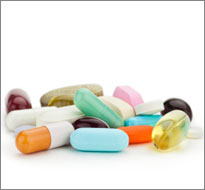According to U.S. government research on drug abuse, the number of people seeking treatment for painkiller addiction increased 400% from 1998 to 2008, and fatalities from prescription and illegal drug abuse now outnumber vehicle-related deaths in 17 states. Increases in certain crimes are also linked with prescription drug abuse, including theft, home invasions and assaults.
A 2011 research brief from the University of Michigan for the National Institute on Drug Abuse, “Prescription Drug Abuse: December 2011,” provides an overview of adolescent prescription drug use, both of legal and illicit substances. The report summarizes the findings of a larger report, “Monitoring the Future: National Survey Results on Drug Use, 1975-2010,” which is based on the responses of more than 40,000 students of public and private high schools.
Key study findings include:
- The prescription drugs most commonly abused by high school seniors in 2010 were: Vicodin (8% of survey respondents), Adderall (about 7%), tranquilizers (5%) and cough medicine (5%). Respondents also reported using OxyContin (4.9%) and Ritalin (3%) for non-medical purposes.
- Marijuana continues to be the top illicit drug of choice for young people. Salvia (nearly 6%), ecstasy (5%), hallucinogens (5%) and cocaine (less than 3%) round out the top illicit drug choices among high school seniors in 2010.
- A majority (70%) of respondents who abused prescription medications received the substances from friends or relatives, meaning the number of survey participants “obtaining them over the Internet was negligible.”
- Reasons for recreational prescription drug use included false perceptions of drug safety, the desire to alter cognition and increased availability: “Between 1991 and 2010, prescriptions for stimulants increased from 5 million to nearly 45 million and for opioid analgesics from about 75.5 million to 209.5 million.”
- Accidental deaths from opioid analgesic overdoses increased sharply over the past decade, from approximately 3,000 in 1999 to more than 12,000 in 2008. The rate of heroin-related deaths has remained relatively steady over the same time period (from nearly 2,000 in 1999 to about 3,000 in 2008.)
- The larger “Monitoring the Future” report notes the following overall trends: “For many years, five classes of illicitly used drugs — marijuana, amphetamines, cocaine, LSD, and inhalants — had an impact on appreciable proportions of young Americans in their late teens and 20s. In 2010, twelfth graders showed annual prevalence rates for these drugs of 34.8%, 7.4%, 2.9%, 2.6% and 3.6%, respectively, reflecting declines in most of them, especially for LSD. Among college students in 2010, the comparable annual prevalence rates are 32.7%, 9.0%, 3.5%, 2.1% and 1.7%; for all young adults the rates are 28.7%, 7.1%, 4.7%, 1.5% and 1.2%.”
Tags: crime, medicine, municipal, addiction, youth


Expert Commentary